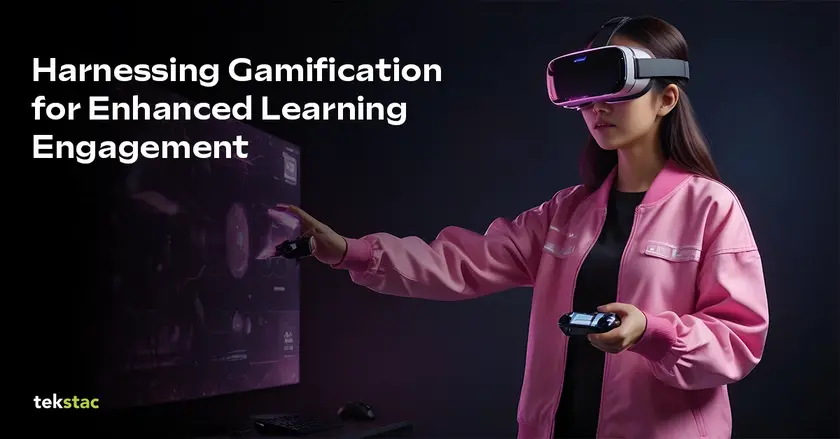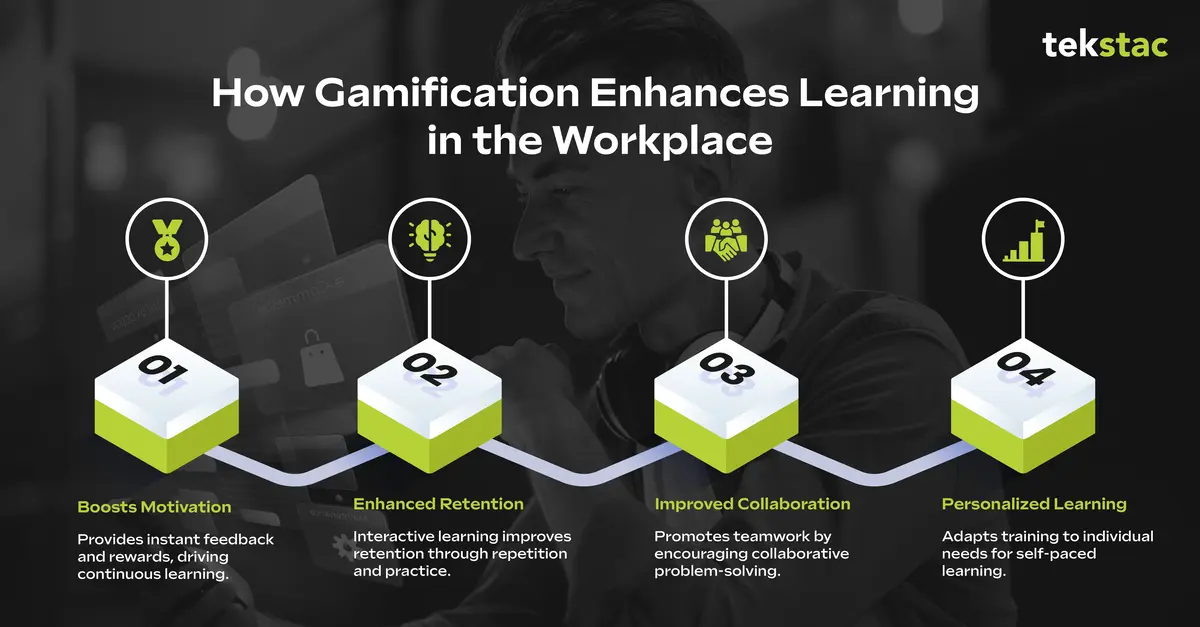Gamification in Learning: Boost Engagement and Retention at Work

Gamification in Learning: How to Engage Employees?
In today’s corporate world, training programs are often viewed as a necessary but uninspiring task. With long presentations, endless modules, and monotonous content, employee engagement during learning/upskilling can take a hit.
But what if we could inject some excitement and motivation into the process?
Enter gamification: the strategic use of game elements—like levels, rewards, and friendly competition—that are now revolutionizing employee training. These tools not only captivate attention but also turn passive learners into active participants. With gamification, businesses are discovering a powerful way to enhance learning engagement and make training not just bearable but enjoyable.
Here’s a fun fact!
The word “gamification” was first coined in 2002, but it didn’t gain widespread popularity until 2010. Today, nearly every sector uses gamification techniques to drive engagement—from fitness apps to marketing campaigns!
The Power of Gamification in Corporate Training
Employees compete for top spots on a leaderboard as they race through compliance modules, or teams collaborating to solve business challenges in a simulated environment. Gamification makes training interactive, fun, and competitive, all while reinforcing key learning outcomes. It’s no surprise that more and more companies are weaving game elements into their training programs to help employees stay focused, motivated, and invested in their learning. “Organizations that use gamified training, report up to a 60% increase in employee engagement.”
How to Implement Gamification in Learning Programs

1. Boosts Motivation
Gamification taps into employees’ intrinsic motivation by providing immediate feedback and rewards. This helps to create a sense of accomplishment and encourages employees to continue learning.
2. Enhanced Retention
Interactive and immersive learning experiences help employees retain information better. Gamified training activities often involve repetition and practice, which are crucial for memory retention.
3. Improved Collaboration
Many gamified training platforms encourage collaboration and teamwork. Employees can work together to solve problems, complete challenges, and achieve common goals, fostering a sense of community and cooperation.
4. Personalized Learning
Gamification allows for personalized learning experiences. Employees can progress at their own pace, and the training activities can be tailored to their individual needs and preferences.
Gamify Training for Real Results: Play Your Way to Learning Success
Gamifying corporate training doesn’t require turning every training session into a full-scale video game. Even small elements of gamification in learning can make a big difference. Here are a few strategies businesses can use to bring gamification to life in their training programs:
Points, Badges, and Levels
Imagine earning points for completing tasks, badges for mastering key skills, and unlocking new levels as employees advance through the training. Points and badges offer a simple yet powerful way to motivate employees by creating visible milestones. These rewards give employees a sense of accomplishment and encourage them to continue learning.
Leaderboards
Leaderboards can introduce a healthy dose of competition into training. Employees see how they’re stacking up against their peers and are motivated to improve their performance. For companies that emphasize teamwork, team-based leaderboards can encourage collaboration, as employees work together to climb the ranks.
Quests and Challenges
Turning training modules into quests or challenges makes learning feel like an adventure. Employees might embark on a “mission” to solve a customer problem, complete a complex project, or achieve specific KPIs. By adding a narrative to the learning process, these challenges can make the material feel more engaging and relevant.
Simulations and Real-World Scenarios
One of the biggest advantages of gamification is the ability to create simulations that mimic real-world challenges. For instance, sales teams could practice negotiating with a difficult customer, or marketing teams might be tasked with developing a new product launch strategy. These real-life scenarios make learning more meaningful and provide employees with a safe space to practice their skills.
Common Challenges in Gamified Learning
While gamification in learning brings plenty of benefits, it’s important to recognize that not all employees are motivated by competition or external rewards. Some may find leaderboards or badges distracting or irrelevant to their personal learning style.
Therefore, it’s crucial for companies to offer a variety of gamified elements that appeal to different learning preferences, ensuring that every employee can engage with the training in a way that works best for them. Moreover, companies need to ensure that gamification doesn’t overshadow the primary learning objectives.
The focus should remain on mastering skills and retaining knowledge, not just accumulating points or badges. Successful gamified training programs find a balance between fun, engagement, and educational outcomes.
The Future of Gamification
As companies continue to look for ways to boost employee engagement and performance, gamification is poised to play an even bigger role in corporate training programs. With advances in technology such as virtual reality (VR) and artificial intelligence (AI), gamified learning will become even more immersive and personalized.
Imagine donning a VR headset to step into a virtual sales meeting, or having AI customize your training path based on your progress and learning style. The possibilities are endless, and the future of corporate learning looks more exciting than ever.
Conclusion: Why Gamification is the Key to Modern Learning
Gamification has the power to transform corporate training from a mundane task into an engaging, interactive, and highly effective learning experience. By incorporating game elements like points, leaderboards, badges, and real-world challenges, companies can enhance learning engagement, improve knowledge retention, and boost employee performance.
As businesses continue to innovate, gamification will play a critical role in creating training programs that employees not only complete but genuinely enjoy.
Gamification in Learning FAQs:
1. What is gamification in learning?
Gamification in learning involves using game-like elements such as points, badges, leaderboards, and challenges to make the learning process more engaging, interactive, and fun. It motivates learners by incorporating rewards and recognition into their educational journey.
2. How effective is gamification in learning?
Gamification boosts learning engagement by up to 60% and improves retention by 25% to 60%. This approach motivates learners, enhances participation, and deepens their understanding of the material for real-world application.
3. Is gamification suitable for all types of learners?
While gamification appeals to many learners due to its interactive and fun nature, it’s important to customize it to the audience. Different learners respond to different types of challenges and rewards, so personalizing gamification elements is key to its success.
4. Can gamification be effectively used in corporate training?
Absolutely! Gamification is particularly effective in corporate training, as it encourages employees to learn new skills in a fun, interactive way, making the training process more engaging and memorable.





